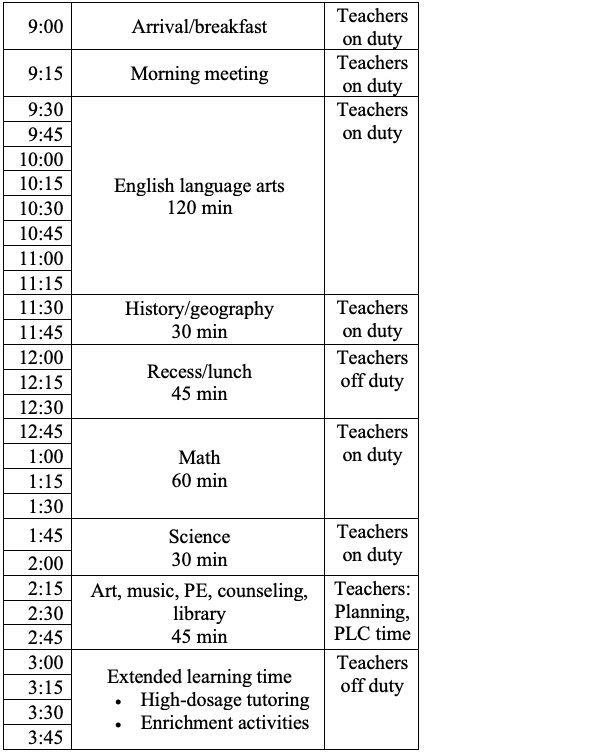Editor’s note: This was the third-place submission, out of twenty-five, in Fordham’s 2021 Wonkathon, in which we asked participants to answer the question, “How can schools best address students’ mental-health needs coming out of the Covid-19 pandemic without shortchanging academic instruction?”
When district leaders in Washoe County School District, Nevada, worried this year about supporting mental health and academics, they knew which experts to turn to. It was the same group of experts whose ideas in past years helped them decrease dropout rates, improve classroom instruction, and develop statewide standards—students.
This February, they brought together more than 200 students in a virtual conference to analyze data, discuss the challenges, and develop solutions for supporting students’ mental health. Working alongside district leaders, they’re planning how to build on the districts’ long-term implementation of social and emotional learning (SEL), including integrating academics and SEL in an existing tutoring program, supporting teachers in providing a space for students to discuss difficult topics, and developing strategies to connect students and families in the summer.
Coming out of the pandemic, there will be plenty of talk about how best to address students’ mental health needs without shortchanging academic instruction. But rather than gather school system leaders in a room to debate competing priorities, look toward systemic, long-term solutions informed by those who are most impacted by educational decisions.
If we truly want to support students’ mental wellness and academic growth, then we need to work with students, educators, families, and community partners to create a systems-wide approach to social, emotional, and academic learning.
To envision a systems-wide approach, think bigger than a one-off program that teaches coping skills, and ask how SEL will show up throughout all students’ educational experiences as a foundation for their learning and development. Draw connections between standalone teacher trainings on trauma-informed practices to broader structures and policies that allow educators to feel supported, connected, and empowered. And when you look to hire much-needed mental health professionals, ensure that they’ll be surrounded with school systems that prioritize SEL throughout students’ education. Without a systemic approach, any attempt to address mental health will inevitably run the risk of shortchanging other priorities or becoming unsustainable.
So how do you promote SEL and academics systemically? Education leaders will need to: 1) create the infrastructure to align often competing priorities, 2) strengthen adult competencies and capacity, 3) create environments and experiences that fully support all students’ learning and development, and 4) use data and assessment systems to more holistically measure students’ outcomes and experiences.
Here’s how to get started:
Build the relationships, partnerships, and infrastructure needed to align social, emotional, and academic priorities. With so many concerns and priorities that will shape the coming years, education leaders will need to create cohesion and coordination across their many stakeholders. This will require deeper partnerships with students and families in order to develop responsive plans that truly address the social, emotional, and academic needs of all students. To build this foundation:
- Create structures to better connect with families and students who have been traditionally left out of school decision-making and those who have not been well-served by existing efforts. For example, work with community partners who have existing relationships or create cross-role teams with well-connected staff, family, or student volunteers to double-down on personalized outreach efforts.
- Set up two-way communication channels that keep all staff, students, families, and community partners informed and engaged around SEL and academic priorities.
- Examine where SEL, mental health, and academic efforts have been impactful and where more support is needed. Determine whether strategies equitably support all students, whether school and community resources are efficiently leveraged, and which programs or practices you should continue, modify, or stop.
- Build a broad coalition—with representation from educators, mental health professionals, community partners, families, and students—to develop a systems-wide plan for supporting students SEL and academics.
Design opportunities where educators can connect, heal, and build their capacity to support students. There will be plenty of talk this summer and fall about the types of professional learning that educators will need to support students’ mental health, make up for academic “learning loss,” and implement new programs. On the heels of one of the most difficult years educators have ever faced, these efforts need to also account for educator’s own social, emotional, and mental health needs. To strengthen adult SEL competencies and capacity:
- Establish dedicated space and time for staff to come together to build relationships, practice self-care, and engage in adult SEL practices.
- Ensure access to mental health support for educators as needed. Check in regularly with staff, and establish a process to identify and provide support for adults at higher risk for significant stress or trauma.
- Create opportunities for innovation and educator leadership. Build consistent time into the schedule for staff to collaborate and share successes and challenges with each other. Explore new ways to team teachers to play to their strengths to deliver instruction and student support.
- Work with educators to design embedded professional learning to build educators’ capacity to support students’ social, emotional, and academic growth. Define professional learning priorities aligned to academic and SEL goals, and identify metrics that track observable, measurable progress in staff’s professional development. Provide educators with coaching and feedback on their SEL practices, including enhanced opportunities for peer coaching and learning.
Create safe, supportive, and equitable learning environments that promote all students’ social, emotional, and academic learning. Brain science tells us that students learn best in emotionally safe and stimulating environments, through trusting relationships, and when they have opportunities to make connections between social, emotional, and academic learning. A large body of research has also demonstrated that high-quality SEL opportunities contribute to students’ academic growth, mental health, and long-term success. To create environments and experiences that promote SEL to support students’ mental health and academics:
- Build structures that cultivate supportive adult-student and peer relationships. For example, examine and revise daily schedules and adult assignments to maximize relationship-building, such as “looping,” student advisory groups, and pairing adults with students to ensure every student has at least one adult at school who checks in with them daily.
- Weave in opportunities for students to develop, practice, and reflect upon social and emotional competencies throughout the day—through explicit instruction of social and emotional skills, SEL integrated into academic instruction, and community-building opportunities. Evidence-based SEL programs help ensure high-quality opportunities for all students.
- Identify and implement a comprehensive system of support for students with additional needs. Determine what resources exist to meet mental health needs and where additional staffing or community partnerships are needed. Establish a process to identify and provide students with additional support when needed, and work in partnership with families and students to monitor interventions.
- Create opportunities for students to express their voice and work together on solutions to issues they care about. This offers students meaningful ways of practicing their social and emotional skills, and supports educators in designing more effective SEL and academic plans informed by students’ perspectives.
Expand data practices to more holistically measure student growth and well-being. A commitment to ongoing continuous improvement will help ensure that existing and new strategies translate into intended academic, social, and emotional outcomes. This will mean collecting and reflecting on data that provide a fuller picture of students’ strengths and needs, beyond single measures of academic test scores. Students, educators, and families will be essential to rethinking assessment systems that better support social, emotional, and academic learning. To rethink assessment systems and promote continuous improvement:
- Review and update existing assessment policies and data infrastructures to more holistically measure students’ social, emotional, and academic development, and address inequities in opportunities and experiences across classrooms and schools. For example, consider data on school and classroom climate, social and emotional competence, and student and family experiences.
- Ensure structures and resources that support schools in the regular collection of data on student outcomes, student and family experiences, and school climate. Establish data systems that support analysis of data disaggregated by key subgroups (e.g., race, income, gender) to allow issues of equity to be addressed.
- Establish systems for sharing and involving educators, students, families, and communities in data reflection and planning for continuous improvement of SEL and academic efforts.
Rather than position mental health and academics in competition, leverage SEL to create a throughline that supports all educational priorities. By working with students, educators, families, and communities to systemically implement SEL, we can create the foundation for all students to thrive socially, emotionally, and academically.









